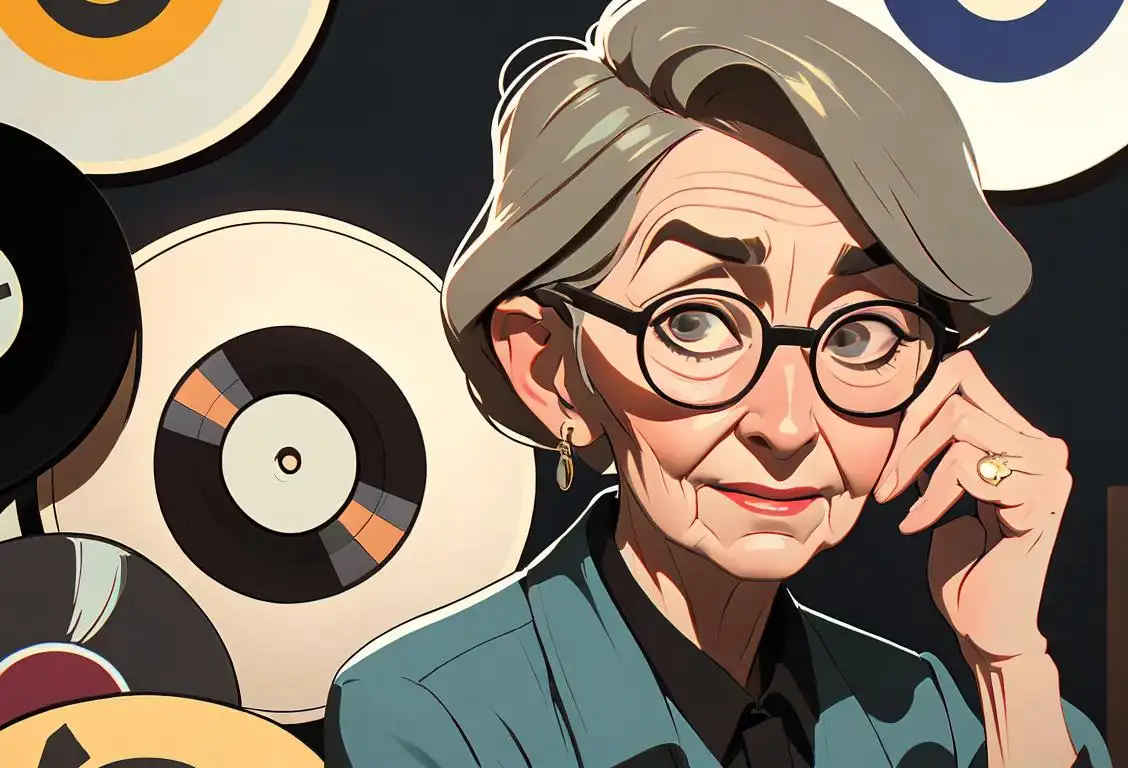National Cut The Cord Day

Hello there, cord-cutting enthusiasts! Get ready to celebrate National Cut the Cord Day, the perfect occasion to bid farewell to those pesky cords tying us down and embrace the freedom of the wireless world. On this day, we commemorate the revolution that unfolded in our living rooms and changed the way we consume entertainment. So, grab your popcorn, unplug those cables, and let's embark on a wireless journey like no other!
When is Cut The Cord Day?
It's national cut the cord day on the 1st July.
The Birth of a Revolution
Picture this—It's the late 2000s, and we're all stuck in a web of tangled cables, juggling remotes while desperately trying to find something to watch. Suddenly, a hero emerges—a streaming service that promises us unlimited access to our favorite TV shows and movies, no cable subscription required. The concept of cord-cutting was born, and nothing would ever be the same again.
From that moment on, streaming platforms like Netflix, Hulu, and Amazon Prime Video became our new best friends. The big satellite dishes started to collect dust, and cable companies began to feel a bit nervous. People were taking control of their viewing experience, choosing what, when, and how they wanted to watch.
As the years went by, cord-cutting became a cultural phenomenon, with more and more people embracing the convenience and cost-effectiveness of streaming. Today, we celebrate National Cut the Cord Day to commemorate this digital revolution and give a joyful nod to a world without cords.
The Benefits of Cord-Cutting
So, what makes cutting the cord so appealing? Let's explore!
- Freedom and Flexibility: Say goodbye to channel packages you never asked for. When you cut the cord, you have the freedom to choose the streaming services that cater to your specific interests and switch between them whenever you please.
- Cost Savings: Goodbye, monthly cable bills! Cord-cutting can be a budget-friendly option, as streaming services often offer more affordable monthly subscriptions compared to traditional cable packages. Plus, no more hidden fees or long-term contracts.
- On-Demand Entertainment: With cord-cutting, the power is in your hands. Binge-watch your favorite series, explore new movies, and discover documentaries at your own pace. No more waiting for the cable schedule!
A Joyous Wireless Celebration
On National Cut the Cord Day, let's raise our remote controls high and toast to the power of streaming! Invite your loved ones, gather around your favorite streaming device, and throw an unforgettable watch party. Whether you choose to indulge in a binge-watching marathon or explore a hidden gem on a lesser-known platform, this day is all about embracing the freedom of cord-cutting.
Remember, cutting the cord doesn't mean you have to say goodbye to all your favorite shows and channels. Many streaming services offer full seasons of popular TV shows and live streaming options for sports and other live events. So, get ready to cheer on your favorite teams without the need for a cable subscription.
History behind the term 'Cut The Cord'
1931
Invention of the television set
In 1931, the first television set was invented by Philo Farnsworth. This revolutionary invention paved the way for a new form of entertainment in households across the world. However, at the time, televisions were bulky and expensive, making them a luxury item for only a few households.
1950s
Introduction of cable television
During the 1950s, the concept of cable television emerged, allowing households to receive television signals through coaxial cables rather than relying on traditional broadcast antennas. This introduced a wider range of channels and improved reception quality. Cable television quickly gained popularity, especially in rural areas with poor broadcast reception.
1970s
Growing cable subscription costs
Throughout the 1970s, cable television subscription costs began to rise significantly. As the number of available channels increased, so did the expenses associated with subscription plans. This led to the dissatisfaction of some consumers who felt burdened by the mounting costs of cable TV.
1980s
Introduction of satellite television
In the 1980s, satellite television systems entered the market, providing consumers with an alternative to cable television. Satellite dishes allowed for the reception of television signals directly from satellites in orbit, bypassing the need for cable infrastructure. This expanded the range of available channels and increased competition in the television industry.
2000s
Streaming services gain popularity
With the advent of the internet and technological advancements, streaming services started gaining popularity in the 2000s. Platforms like Netflix, Hulu, and Amazon Prime Video allowed users to watch a wide range of movies and TV shows on-demand, bypassing the need for traditional cable or satellite TV subscriptions. These services offered convenience, affordability, and a vast library of content.
2010s
The rise of cord-cutting
As streaming services continued to flourish, more and more consumers opted to 'cut the cord' with traditional cable or satellite TV subscriptions. 'Cutting the cord' became a popular term for canceling these subscriptions and relying solely on streaming services for entertainment. This shift in consumer behavior was driven by factors such as cost savings, flexibility, and the ability to access content on multiple devices.
Did you know?
Did you know that the term 'cord-cutting' originated from the act of physically cutting the cord connecting a cable box to a television? It's the perfect metaphor for breaking free from the limitations of traditional cable!Tagged
fun loved ones financeFirst identified
28th June 2017Most mentioned on
1st July 2019Total mentions
1484Other days
Awareness Day
One Day
Action Day
Opposite Day
Seniors Day
Veterans Day
Happiness Day
Bison Day
Suicide Prevention Month Day
Family Day









